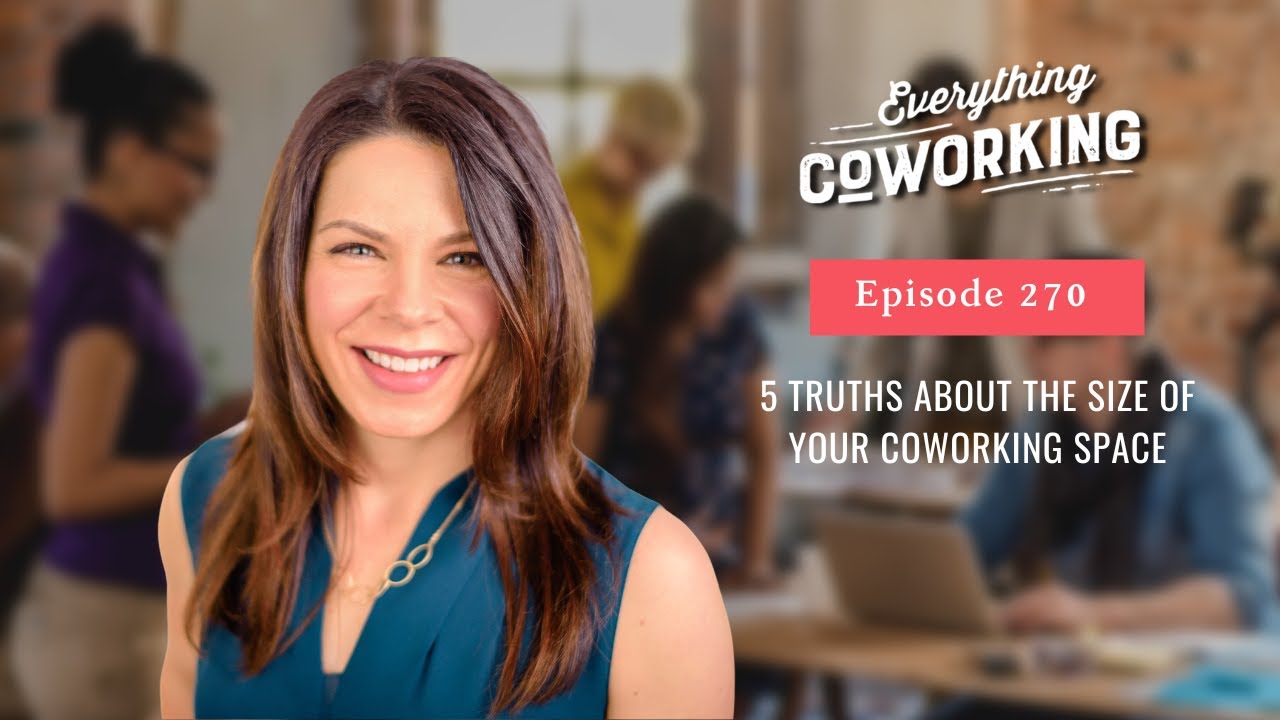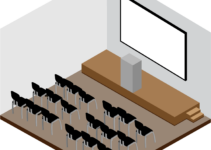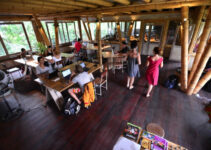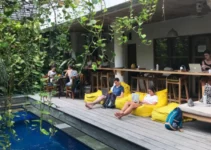hey there this is jamie russo host of the everything co-working podcast thank you for joining me i have to jump in with a huge congratulations to sparkle from cameron management she is community manager certified and would you agree she has the perfect community manager name sparkle just took on this role she's been in kind of a property management leasing management role and is now taking on a community manager role so sparkle congrats and we have had several folks that have you know more of a traditional real estate background taking on more of a community manager role and learning kind of how to integrate sort of both sides of that type of role which is really fun we're seeing a little bit more of that in our community manager university program and we just put our next q a call on the books for our creative co-working partnerships course so if you're thinking about doing a creative agreement please join us that call is on september 27th so if you join us before then you will jump in and get access to our ongoing calls you can learn more about that course at everythingcoworking.com forward slash management agreements so today well first i hope you're all doing well and jumping into i guess it's like technically fall i know this because over the weekend we got all of our fall decorations out i love fall colors i am in like orange orangy peachy salmony color family fan and i'm a big nespresso fan because i like easy cappuccinos so um if you you listen to the podcast you know i'm a big cappuccino fan with almond milk please and lots of foam so i and not every almond milk foams i'm sure you know this and i could never get it to foam on a fancy espresso machine which i sold on facebook marketplace at some point i had a nice one i could never get almond milk to foam and i think i buy whole foods 365 brand almond milk and it foams perfectly and espresso just launched its seasonal pumpkin spice cake flavor which is awesome so i had that for my coffee this morning which was great and it's soccer season i've probably been talking about this but i am super involved in our local league and i coached a game saturday morning at 8 15 and then refereed two games and then came home and took a very serious nap but uh it's i love the fall and glad we're here and it's back to business time i think we talked about that on the last episode which uh is awesome so um and okay i think i mentioned on the last episode we have an uh how i did this session about co-warehousing and i've had to reschedule that due to panelist availability so hang tight and we will put the registration up for that um it'll be in october so i will let you know when that is back on the books speaking of not really speaking of if you are gonna be in frisco for the gwa conference we'd please send me an email i would love to hear from you i'd love to connect if we haven't met before if we don't know each other already i can't wait to see all of you that i already know who will be there if we have not met before i would love to meet you and i will be there all week as i keep saying i'm flying in monday i won't really be there all week but most of the week okay so this i've been kind of doing a series approach to the podcast so our last series was on your online presence as a co-working space and if you haven't listened to the last five or so episodes definitely do that this series is about the co-working business model so the first part of that series was ted latz from success space with a pretty unique business model approach that they're doing and that is kind of feeds into some of the things we're going to talk about today so we're going to talk about five truths about the size of your co-working space and um science matters in co-working so let's dive right in the first truth is that generally the profits from your co-working space are pretty highly correlated to the size of your co-working space until you get to a certain point where you just really have to manage size supply and demand so if you want to put in 50 000 feet of co-working you'd better make sure you're at a market that can support that and that you really nail your product mix so i do a lot of work on this concept with my startup school students with our creative co-working partnership students because i'll talk about that in a in a minute but size is so important and then product mix within the size so in general the profits from your co-working space are going to be higher the bigger your space is because there there are some economies of scale so for example if you are thinking about a 3 000 square foot space you might as well do a 6 000 square foot space and i understand your access to startup capital will matter but you do not need double the staff when you go from three thousand to six thousand feet you're adding a staff person roughly every eight thousand feet maybe at seven thousand or seventy five hundred it depends a lot um in terms of it depends on a lot of things um which we'll talk about in a minute but say it's roughly 8 000 feet and so you can go from 3 000 to 7 000 without changing your staff which is a very big deal because after your rent your staff is your next highest expense and that expense is going up and great talent continues to be challenging you know to find so there are economies of scale there if you go from three thousand feet to six thousand feet your the cost of your internet doesn't change um your rent will change your utilities will change there are certainly things that change but a couple of big expenses will not change and yet the inventory that you have to sell changes a lot and so your opportunity for revenue is greatly enhanced when you go from 3000 feet to 6000 feet and up and up so if you start with a six thousand square foot space this is so really really rough it is i'm constantly trying to create like back of the envelope models that people can use to understand you know what the profits might look like on a certain square footage i've recently been working on that for the management agreement model and a huge shout out to a couple of folks that are probably listening who have been helping think through that and work through that and it's not easy because there are so many variables so in our startup school we use a model where you it's a bit you know there's an input tab and you put in all your inputs a lot of them that will spit out a pro forma for you but you can't get the pro forma until you put in all of those assumptions there's just a lot of factors that matter um you know market rent matters how much pent up demand there is your ability to price matters um you know whether you're doing a premium space there's a gorgeous space that's opening in menlo park which is near me i was just eyeballing their website and i'm dying to have them on the podcast the brand is called canopy and they are selling dedicated desks for 1200 a month super they're going for a super premium position they already have locations open in san francisco that are also pretty premium priced so lots and lots of things matter they people will pay that price for that location and for those amenities so back to my point about this is uh sizes so super back of the envelope if you have a 3 000 square foot space you have some offices you have some open space and you have a 25 margin your profit might be 30 000 in a year and that may or may not be worth doing the project to you and certainly there's risk in there do you have too much open space are your offices the wrong size you know can you be at full capacity um and can you afford a community manager in that equation uh and if you are the owner and you're paying a community manager at if you're in a market where the community manager commands you know 50 000 a year which we are seeing then that profit margin may not be 25 it might be lower and so your profit potential is not 30 000 it's 20 or 25.
so is the risk that you are you know putting into the space in terms of tenant improvement buying furniture is it worth that dollar amount and you know over time and it might be if you're looking at this as an investment and you have another business that you do then you know a side business that's generally run by your community manager that yields twenty to thirty thousand dollars a year might be fine for you um so it it depends on many many things as you go up in square feet so again very back of the envelope a 6 000 square foot space might yield 70 000 in annual profit a 36 000 square foot space might yield 400 000 in annual profit and do know that in my little back of the envelope model if you i am assuming that you are holding open space constant here so that you're really going hard on offices when you get to 36 000 feet and that the open space is held constant because at some point you can't scale the open space with the size of the space like if you're doing you know you're going to keep sort of 25 you may not go it may not be percentage it might be a fixed square footage of open space because at some point you can't sell um you know 50 open space unless your work car or someone else but um so it's really really hard to do these sort of back of the envelope models without putting in a lot of inputs and i would say that is super important because i have folks who come you know to me through my startup school and um a they want to start a small space but they're thinking that the small space might yield higher profit or they're not interested in the typical model of 20 000 square feet with high density of offices and a little bit of open space they just that's not what they want to start and so we're in this really interesting time i think it used to be that we'd sort of see not even used to be i would say you know we've been in this mode of co-working not just executive suites since you know let's call it 2010 would have been pretty early for a lot of spaces so 10 12 years that's not a lot of time but during that time this like really profitable kind of model of 15 000 20 000 feet a lot of office space some open you know flex dedicated meeting room you know is like a typical model that yields higher profits but people are thinking a lot differently about what they want to create and so if you're not sort of thinking about that typical space then i want to talk through like what considerations you should think about with a smaller space or if you want the profits that come with the typical space do a typical space or think about other ways to be more profitable so the second sort of truth about smaller spaces is that you can generate a profitable space but you have to be selling a lot more than space because when you think you know when you just do the math on the model for co-working you are selling inventory of seats and maybe you can oversell some of the open space seats and maybe you cannot there's a fixed amount of inventory that you have in three thousand feet or six thousand feet or twenty thousand feet and so that will impact you know what your pro farmer can produce unless you are diversifying what you're doing with the space and creating sort of you know more profit per square foot or offering services that don't rely heavily on the physical space so business identity packages i love that phrase um wes used that sp that um term in our how i did this on growing uh our virtual office revenue so we can call it virtual there's lots of different uh terms that mean different things but you might sell virtual offices you might sell identity packages they come with mail and conference room time it's similar kind of to a virtual office you might sell digital mail you have to have a pretty compelling address to do really well with that approach so wes walker has 5 000 square feet in downtown boston and does really really well and that's a small er space right it's not 20 it's 25 of a 20 000 square square foot space so um i would consider that to be a small earth space but he does really well with these additional services and so he's running a great business events are a great way to add revenue to a business but you have to have that competency and i don't mean like uh events for your members happy hours uh you know scotch tastings i mean weddings i mean a high dollar high ticket events that you're running often so you're really optimizing for events and you're in a market where you can do that where there is demand and there are not a lot of other great options for hosting events and you have a really cool creative space that is really compelling for that and you can book a lot of those and your staff is probably pretty focused on that versus managing your membership so we see lots of creative things happening i think in this space than ever before so rather than opening a small space and saying i'm just gonna do you know open memberships and you know not build offices because i have you know a little only a little bit of capital to start with that's the model that that will not yield profit so if you're thinking simple build out because i don't have a lot of startup capital and i'm going to sell mostly flex memberships it will be very hard for you to ever turn a profit or a meaningful profit to pay a community manager and then still have profit but if you're gonna sort of supercharge this real estate and there's a reason that you can do that you're in a unique market or you just know you can deliver on some of these extras then um it's totally possible i think even today i work with a lot of folks in my startup school of course who are doing specialized or niche memberships and ted latsu was on last week talking about the success model i think this is a great example their footprints are roughly 5 000 square feet but they're doing a cafe in the front that's open a lot of hours so i think all the me they put day parts um including like wine and charcuterie trays count me in they're doing coaching and they're doing co-working so um in meetings so they you know they're really diversifying their revenue sources so truth number three also i just want to mention like on the smaller space thing i think you have to be a bit of a unique operator to make this work so when i talk to people in my co-working spaces it's like obviously very intuitive i can kind of tell if i think like they can go after the small space they have a unique sort of energy and approach and passion about what they're doing and they have a very very clear vision about what they're gonna execute and how they're gonna make these numbers work so i just want to mention that but you totally can do it and i will say i have a startup school student who said you know my course talks a lot about the typical model and so we're working together on kind of her atypical model and it's kind of sparked this idea like oh i should you know talk a little bit more about this on the podcast truth number three small spaces are really almost impossible to make work for management agreements or creative partnerships this is because they just don't yield enough profit to share with the landlord so the landlord wants to beat market rent right that's generally fundamentally what they're trying to accomplish so if they have to pay out a management fee and pay the operating expenditures the premium after that to mark that the premium that the profit makes over market rent is usually not high enough to make it interesting for the landlord right because it's a lot of extra like mental energy um and risk for the landlord to do a creative co-working a creative partnership and which you know can be a management agreement it can be a ref share there's a million ways to to do these deals but you have to be going after a bigger space and here's the good news for you as an operator there's so much less risk when you're doing a partnership that you can do a bigger space so mentally from a mindset perspective you have to think bigger when you're doing a creative deal you got to go bigger at least 15 000 feet and think big about what that looks like and what that model looks like it is probably pretty office dense but it depends on who you're serving and what they what they want and how they want to work so you know your market but just know that generally the revenue and therefore profit that you're yielding on a 5 000 square foot space just generally doesn't work for a creative agreement and again we could kind of dive into spreadsheets and show you why that is the case we do that in our creative co-working partnerships course if you're interested in that again we're kicking off our cohort on september 27th and you can learn more about that at everythingcoworking.com forward slash management agreements um okay truth number four if you are running a small space and you're getting to your take-home pay goal by being the community manager i want you to make sure that makes sense so one you gotta love that job because you know it's a hard job and so you have to love doing it and then make sure that and everybody makes decisions differently i don't mean to be a total capitalist about this because there are lots of reasons why we might do a small space and we can talk about that in a minute but if we're just talking about profitability then the community manager role is generally a 20 to 27 an hour job so if you are a business owner it would strike me that you probably are capable in the market of making more than that so you have to just recognize that you're making a decision to reduce your market rate to take this job um in order to get the co-working business to sort of meet your take-home pay so maybe you're saying like look smaller space but i'm going to be the community manager so i'm not paying a staff person i'm going to you know invest my time in return for that and the space kicks off a little bit of profit and those two things combined make it worth it to me the challenge with that is it's not scalable once you go do a second space right so you as the community manager of a 3 000 square foot space if you wanted to do another space that doesn't work and it probably doesn't work if you are doing a larger space because you'll need more people or you'll need to really be able to step outside of working in the business and start working on the business so i just want you to think about what your market rate is and if you're going to do that role does it make sense one of the other episodes i want to do is pull together all the folks that have gone through my startup school who have like entirely other businesses that they run it's so interesting to me people have just totally different mindsets when they go into this business some they're going to be the community manager they're going to own the business they're going to do everything and then some folks are just very entrepreneurial and they have other businesses and then co-working is one of those businesses and maybe they're synergistic um or maybe maybe not one of my startup school students who i'd love to have on the podcast he owns fitness gyms and he built a space and partnered with a local coffee brand and they have a kiosk in his space that focuses on being um like a delivery source for i think it's ubereats or i think it's ubereats doordash or doordash deliveries for coffee and it blows my mind that people order coffee get an espresso machine um but they do it's shocking so anyway super creative um but he has a lot of different businesses and so this is more of like you know he's the ceo or you know an investor in the business and has folks who run it so lots of different ways to kind of look at this um but that's one way to do a smaller space again kind of going back to the one that we you know talked about in number one is you might be running this as a separate business and say i don't need it to make a hundred thousand dollars a year i have other business interests that do that and or maybe i have a full-time job and this is gonna be you know kind of a side business that i do so um truth number five it's hard to create the diversity of workspaces that people want in a small space so i think if you're gonna do a small space you have to really really really nail the design and i think it can be very challenging and when i think small i'm thinking up to 5 000 square feet because i think that folks who are leaving their homes they want to go someplace that has some diversity in it you know because i'm sitting right now in my little home office and i would go to a co-working space to feel something more like expansive um and i'm just one use case so there are lots and lots of types of consumers that you might be serving but be careful about taking a space that's too small to really deliver the experience that people are looking for today um again once you get to 5000 feet like the success example from last week they're doing cafe and workspace and i think that's gonna be pretty cool and that whole format is five thousand feet but if you're doing like 2000 feet you're pretty limited in what you can put in 2000 square feet so make sure you're delivering a vibe and a feel and the types of workspaces that you know people will use and will want i think if it's one big open space and it's kind of library like it may not be the vibe that people are looking for so you have to just know what you're getting into really think through what the experience is going to be like and work with a designer that like really gets it and can help you think through how to best use the space now why do people do smaller spaces i think access to startup capital so i really want to do this business but i don't have access to bank loans or investors and so i got to bootstrap this thing and i'm going to do a smaller space to start with totally get it just know you know these truths and be thinking really hard about what the outcomes are maybe you're just risk averse but again know what to expect make sure you're running your numbers do the numbers be really really conservative about the numbers because a lot of folks starting spaces are not 25 they're they're professionals who have a professional career behind them and maybe not you know years and years and years to experiment with things and so be careful about starting something that is not going to meet your goals you know and signing a lease that's on a long time horizon and you do need to sign a longer lease because there are a lot of things that you know we want to avoid by by signing shorter leases which we'll talk about in a different session but it's super important for you to be thinking about your risk reward approach and whether this business makes sense given the timeline that you have and the access to startup capital so if you're working on a smaller space i would say you know have room for expansion so if you're starting smaller which you can build out over time in the space that you're in awesome have a longer time horizon so if you're going to start small then make sure that you've got plenty of time to work on this and that you're not trying to like you know earn your retirement in the next five years that's not going to happen i would be thinking hard about diversified revenue streams like we've talked about talked about today um sticking to just space on a small space is probably going to be disappointing i think another approach is staffing leanly so we've had brian watson was on talking about you know automating a co-working space we're starting to see that model appear a little bit more in terms of smaller spaces and suburban markets that will be leanly staffed that's a certain kind of approach and i think the jury is still out on you know does that work but you know i have folks in my startup school or sorry my not my startup school in our everything co-working academy who are really experimenting with how to serve their you know members and their guests and you know deliver on hospitality without overdoing staff because it's such a big expense and so if you have a smaller space having full-time staff there all day you know may simply not work or it may simply not be necessary so experimenting with what that looks like and i'm hoping um one of those folks in particular will be willing to share her experience when she's ready i know she's experimenting a lot and i always like people to feel like you know they have their learnings sort of processed before they come on the podcast so we will um ask her to do that so just some thoughts in terms of you know size of space and if you are thinking about doing a co-working space and you don't know how to think about what this looks like from a business model perspective join our startup school we're also about to launch a business plan um mini course so stay tuned for that it does not heavily cover the pro forma because that is covered in the startup school but i think to either confirm or deny your assumptions about the type of business you want to do that can easily be done in startup school and we walk you through the process step by step so the risk in doing it on your own and making a lot of assumptions that make a big impact in your financial life i think that's really dangerous so i love having people come through the startup school even if they don't end up doing a space because it doesn't end up aligning with what they want that's okay but at least you have had the support to you know run a model and make sure you know what you're getting into so give that some thought and we will see you next week and we will continue with our theme of business models and co-working have an awesome week between now and then you




